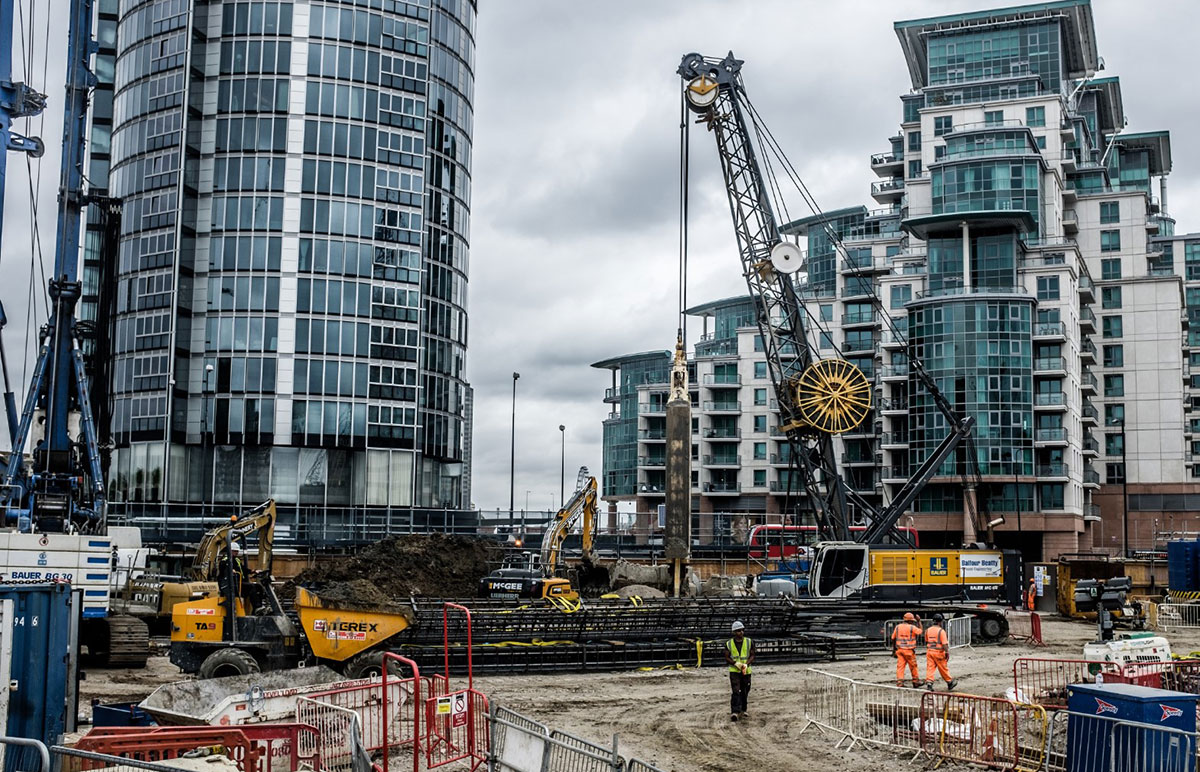Little Known Facts About Geotheta.
Little Known Facts About Geotheta.
Blog Article
The Main Principles Of Geotheta
Table of ContentsGetting The Geotheta To WorkSome Known Details About Geotheta Not known Facts About GeothetaThe Ultimate Guide To Geotheta
They team up with civil designers, structural engineers, designers, and other professionals to integrate geotechnical considerations into the total task layout and construction procedure. This requires effective team effort, coordination, and interaction to make certain that the geotechnical facets line up with the job objectives and fulfill governing requirements.Mining & Products Engineering: Concepts of boring, penetration rates, and variables impacting the choice of exploration method. Blowing up methods in surface and underground functions. Mechanical and continuous techniques to fragmentation, including longwall shearing and fullface boring.
Integrated analysis of fragmentation and comminution procedures. Used by: Mining & Products Engineering.
The Buzz on Geotheta
Bachelor's degree programs in civil, geotechnical, geological, and ecological design generally last 4 years and include general education and learning programs in English, social scientific research, and the humanities, in addition to training courses in innovative maths, structural geology, and fluid mineralogy. (https://slides.com/geotheta)
Geotechnical engineering entails the assessment of the soil and rock conditions at a specific site, and their effects for the development of that website. As a lot of structures count on the ground for support, it is without shock that a detailed understanding of the ground problems, and the suitability of foundation systems, are important to the long-term stability and performance of the building or structure.
Specialising in the investigation of geological developments and ground practices, geotechnical designers execute scientific investigations and testing to understand the impact these geological formations may have on the layout and construction of building, civil and framework jobs. This proficiency is crucial for the layout and construction of buildings, roads, tunnels, dams, bridges, and water system and sewage systems.
The geotechnical group at Douglas Partners regularly seek advice from with designers, layout engineers, designers, and building contractors to make recommendations on style and advancement propositions to make certain that the constructed frameworks are accordingly made for the ground problems. For instance, the layout of footing systems requires to think about the weight of the structure, the capability of the ground to support that weight along with motion tolerances and efficient building and construction.
The Geotheta Statements
This task is greatly streamlined by the use our Douglas Map geospatial system that makes this information conveniently available in a simple to use web internet browser user interface. A geotechnical engineer will certainly guide the drilling of boreholes and test pits to accumulate dirt and other examples, and additionally examine surface area functions and ground direct exposures to form a geotechnical design of the subsurface conditions.
Relying on the project type and ground conditions experienced, research laboratory screening may to name a few things assess stamina, compressibility, reactivity and/or leaks in the structure of dirt and rock samples. Hereafter information is collected and looked at, the results are made use of for a geotechnical design of the site, which is normally provided as areas across the site.

A geotechnical examination naturally can only evaluate the ground problems at the locations drilled or excavated. Natural variations in dirt and rock conditions can occur across a site and between examination places. It is therefore good method that the geotechnical designer be kept throughout building and construction of the task to give on-site confirmation that the ground problems encountered are regular with the expectations and recommendations given in the geotechnical investigation report.
Geotheta Fundamentals Explained
Geotechnical engineers use their extensive knowledge of dirt and rock to examine danger and fix problems on diverse infrastructure projectsGeotechnical design is a specialist branch of civil design which checks out the behaviour of earth products and the application of dirt and rock mechanics. Consulting Engineer. As a geotechnical designer, you will certainly evaluate Visit This Link the physical, mechanical and chemical properties of soil and rock in order to make foundations, retaining structures and earthworks
Geotechnical design is closely linked to and overlaps with, both engineering geology and ground design - https://trello.com/u/geotheta. It's feasible to specialise in geotechnics or benefit a geotechnical company yet be referred to as an engineering rock hound or a ground designer. As a geotechnical engineer, you'll need to: construct and keep relationships with clients and other professionals entailed in the site, throughout each projectmaintain safety requirements on site be conscious of cost ramifications when you make recommendationsstudy geological maps and aerial pictures from a range of sources and from various time periodsexamine building prepares to see how feasible they are based on your understanding of the siteinvestigate threats or geological threats for the sitesearch for ecologically sensitive features, such as landfill begin to create accurate and expository ground modelsplan field investigationsdrill and analyse examples of bedrock, soil, groundwater and added products manage various other experts on sitesolve technological issues as they emerge, such as unexpected frameworks at drill sitesmonitor conditions throughout and after construction to make certain structures are stable in the short and lengthy termadding information accumulated on website to your first researchcreating geotechnical calculations, drawings, and 2 or three-dimensional computer system versions translating the datamaking recommendations concerning the suggested use the site

Report this page